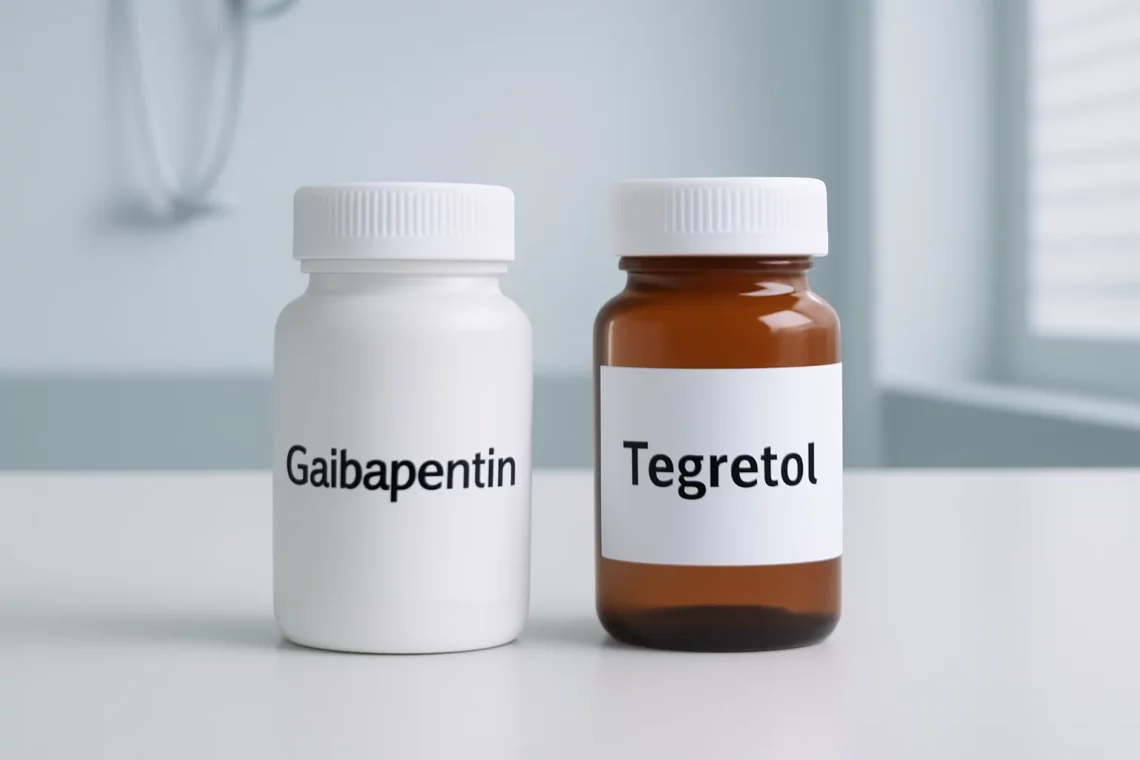
Gabapentin vs Tegretol: Key Differences and Uses Explained
Gabapentin and Tegretol are two medications commonly used in the management of neurological and psychiatric conditions. While both drugs serve important roles in treating various disorders, they belong to different classes of medications and function through distinct mechanisms. Gabapentin, often prescribed for its anticonvulsant properties, is primarily used to treat conditions like epilepsy and neuropathic pain. On the other hand, Tegretol, known generically as carbamazepine, is also an anticonvulsant but has a broader range of applications, including the treatment of bipolar disorder and certain types of nerve pain.
The choice between Gabapentin and Tegretol can significantly impact patient outcomes, as each medication carries its own set of benefits and potential side effects. Understanding how these drugs compare not only aids healthcare professionals in prescribing the most appropriate treatment but also empowers patients to make informed decisions regarding their health. This article delves into the key differences and similarities between Gabapentin and Tegretol, focusing on their mechanisms of action, uses, side effects, and considerations for patients.
Mechanisms of Action
Gabapentin and Tegretol operate through different mechanisms, which is crucial to understanding how they affect the body.
Gabapentin works primarily by modulating the release of excitatory neurotransmitters. It binds to the alpha-2-delta subunit of voltage-gated calcium channels in the central nervous system. This interaction results in decreased excitatory neurotransmitter release, which can help alleviate pain and reduce seizure activity. Gabapentin is not a GABA receptor agonist, despite its name suggesting a connection to GABA (gamma-aminobutyric acid). This unique action mechanism differentiates it from many other anticonvulsants.
In contrast, Tegretol is a sodium channel blocker. By inhibiting the influx of sodium ions during neuronal depolarization, it stabilizes the neuronal membrane and prevents the spread of abnormal electrical activity in the brain. This property makes Tegretol effective in controlling seizures and managing mood disorders. Additionally, Tegretol can influence various neurotransmitter systems, contributing to its efficacy in treating conditions like bipolar disorder and trigeminal neuralgia.
Understanding these mechanisms is essential for healthcare providers when selecting the appropriate medication for a patient. While both drugs share some overlapping uses, their different actions can lead to varied outcomes based on the specific condition being treated.
Indications and Uses
The clinical applications of Gabapentin and Tegretol differ significantly, reflecting their unique pharmacological profiles.
Gabapentin is primarily indicated for the management of neuropathic pain, particularly pain resulting from conditions such as diabetes or shingles. It is also commonly prescribed as an adjunct therapy for partial seizures in adults and children. Furthermore, recent studies have explored its potential in treating anxiety disorders and restless leg syndrome, though these applications are not universally approved.
Tegretol, on the other hand, is versatile in its uses. It is frequently prescribed for the treatment of epilepsy, specifically for focal and generalized seizures. Beyond its anticonvulsant properties, Tegretol is also a first-line treatment for bipolar disorder, effectively stabilizing mood and reducing the frequency of manic episodes. Additionally, it is used for trigeminal neuralgia, a condition characterized by severe facial pain.
The choice of medication often depends on the specific symptoms and diagnosis. For instance, if a patient presents with neuropathic pain, Gabapentin may be more appropriate. Conversely, if a patient has bipolar disorder or requires seizure control, Tegretol may be the better option. This highlights the importance of a thorough evaluation by healthcare professionals to determine the most effective treatment plan.
Side Effects and Considerations
Both Gabapentin and Tegretol come with a range of potential side effects that patients should be aware of.
Gabapentin is generally well-tolerated, but it can cause side effects such as dizziness, fatigue, drowsiness, and peripheral edema. Some individuals may also experience cognitive effects like memory problems or difficulty concentrating. In rare cases, it may lead to mood changes or suicidal thoughts, necessitating close monitoring by healthcare providers.
Tegretol also has a spectrum of side effects, some of which can be more severe. Common side effects include dizziness, drowsiness, nausea, and blurred vision. However, Tegretol has the potential for more serious adverse effects, such as aplastic anemia and liver toxicity. Regular blood tests are often required to monitor for these complications, particularly during the initial stages of treatment.
When considering either medication, it is vital to evaluate a patient’s overall health, including any existing conditions or medications that may interact with Gabapentin or Tegretol. For example, individuals with a history of liver disease may not be ideal candidates for Tegretol, while those with a sensitivity to medication may need careful monitoring on Gabapentin.
Ultimately, understanding the side effect profiles of both medications can empower patients and providers to make informed decisions about their treatment options, balancing potential benefits against risks.
Conclusion
In summary, Gabapentin and Tegretol are both effective medications used to treat various neurological and psychiatric conditions. Their differences in mechanisms of action, indications, and side effects highlight the importance of personalized medicine in achieving optimal patient outcomes. While Gabapentin is primarily utilized for neuropathic pain and seizures, Tegretol’s applications extend to mood stabilization and specific types of pain.
Patients considering either medication should engage in thorough discussions with their healthcare providers to evaluate their specific needs and health conditions. Understanding these medications’ nuances can lead to better treatment adherence and improved quality of life.
As a reminder, this article does not constitute medical advice. Always consult a qualified healthcare professional for any health-related issues or concerns.




